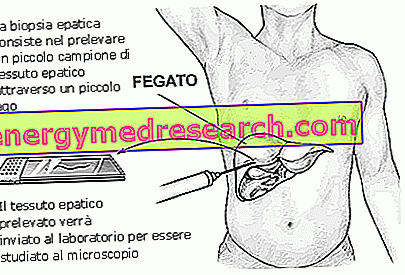Plasma proteins circulate in the blood covering the most disparate functions; essential for the transport of fat-soluble substances, they also intervene in the immune response, in blood coagulation, in inflammatory processes and in the regulation of various activities of the organism (peptide hormones, enzymes, buffer systems, etc.).
The liver is the key organ in the synthesis of many plasma proteins; not surprisingly, their concentration decreases in the presence of reduced liver function, as happens during cirrhosis or other chronic liver diseases.
Albumin (55-65%) and globulins (25-35%) alone represent about 95% of circulating plasma proteins, which together make up about 7% of the plasma; their quantity and the respective proportions can be evaluated starting from a simple blood test. Furthermore, the qualitative contribution of the various protein fractions can be evaluated by electrophoresis, thus subjecting the plasma proteins placed in a support on which they can flow (cellulose acetate, agar gel or polyacrylamide gel) to an electric field. The recall towards the positive pole (anode) depends on the electric charge, on the mass and on the shape of the plasma protein; electrophoresis is therefore useful to differentiate the causes of hyper and hypoproteinemias (increases and decreases in plasma proteins), characterize them in selective (increase / decrease of a single fraction) or non-selective (generalized increase / decrease), and detect presence of abnormal proteins (such as monoclonal gammopathies, deriving from an altered synthesis of immunoglobulins sustained by benign or malignant alterations of the immune system, from which they originate clones of B lymphocytes that hypersintetize only one type of antibody).
Electrophoresis is performed on serum, in which fibrinogen is normally absent, which alone represents 4% of plasma proteins.
| Plasma Proteins | Main components | Percentage | Value |
| totals | 6.4 -8.3 g / dL | ||
| albumin / globulin ratio | 1.13 - 1.94 | ||
| albumin | 53 - 66% | 3.5-5.0 g / dL | |
| alpha globulins 1 | α1-antitrypsin, α1-acid glycoprotein, α1-lipoprotein, | 1.9-4.5% | 0.14 - 0.33 g / dL |
| alpha globulins 2 | α2-macroglobulin, haptoglobin, ceruloplasmin, α2-lipoprotein | 6.5-13% | 0.48 - 0.96 g / dL |
| beta globulin 1 | transferrin, β-lipoprotein | 4 - 6% | 0.3 - 0.44 g / dL |
| beta 2 globulins | C3 complement | 1 - 3% | 0.07 - 0, 22 g / dL |
| gamma globulins | IgA, IgD, IgE, IgG and IgM | 10.5-21% | 0.77 - 1.54 g / dL |
Electrophoresis or Protidogramma:


- For dehydration, haemoconcentration, venous stasis during collection (proportional increase of all fractions).
- Increased gamma-globulin (despite the drop in albumin) in some situations of liver cirrhosis, autoimmune diseases etc.
- Presence of abnormal proteins (polyclonal or monoclonal gammopathies) etc.
Total protein decrease (frequent), causes:
- For hyperhydration, increase in volume (proportional reduction of all fractions).
- Decreased synthesis due to insufficient food intake. Eg: for malabsorption, for chronic liver diseases, malnutrition, severe immunodeficiencies, etc.
- For protein loss from kidney (nephrotic syndrome), from the intestine, for bleeding, for tumors, for burns, etc.
- Excessive endogenous protein catabolism (burns, hyperthyroidism, neoplasms, overtraining).
 | Several electrophoretic traces with connected pathologies  Click to enlarge the image |
Functions of plasma proteins »



